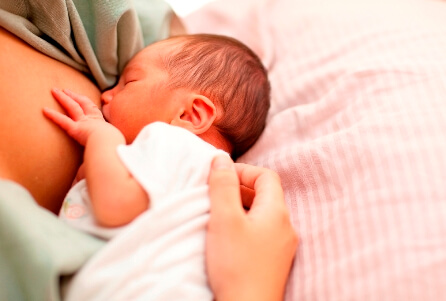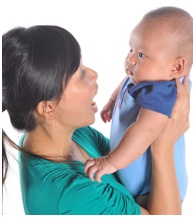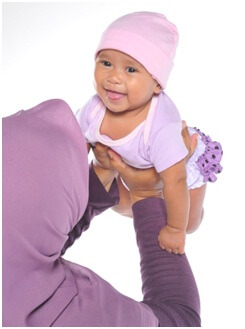Breast is Best

The benefits of breastfeeding are clear — if you are able to breastfeed, doing so has myriad advantages for you and your baby. As Ms Cynthia Pang, Assistant Director of Nursing and Senior Lactation Consultant of KK Women’s and Children’s Hospital, says: “Breastfeeding is universally accepted as being ideal for your baby because of its numerous advantages for both the mother’s and baby’s emotional and physical health; and because of the remarkable qualities of natural breast milk compared to commercially prepared formula milk.”
According to Ms Pang, here are the advantages of breastfeeding:

For the mother
It can help a mother bond physically and emotionally with her baby.
It helps the womb to contract faster and reduces blood loss after childbirth.
It reduces the mother’s risk of breast and ovarian cancer later in life.
It can help the mother lose some of the weight gained during pregnancy faster as calories are burnt during breastfeeding.
Breast milk is readily available and is always at the right temperature.
For the baby
Breast milk has the right balance of nutrients a baby needs, including protein, carbohydrates, fat, calcium, vitamins and minerals.
Breast milk is easy to digest.
Breast milk has antibodies that can boost a baby’s immunity and protect from common childhood illnesses such as diarrhoea and respiratory tract infections.
Breast milk reduces the risk of allergies in the baby.
Breast milk has been linked to a baby’s brain development; there is evidence that breastfed children perform better in intelligence tests.

Breastfeeding starts when the baby is born, but until after birth, there’s plenty you can do to prepare during pregnancy. Arming yourself with information on breastfeeding techniques and troubleshooting will help you through those tough early days with your newborn.
GET READY
- See a lactation consultant
Start in early pregnancy, says Ms Pang. Check with a lactation consultant to see if you have inverted or flat nipples as these can affect how your breastfeeding. Pre-delivery, under supervision from a lactation consultant, you can try to correct the inverted or flat nipple with the use of a device called the “niplette”. The device helps to draw the flat or inverted nipple out, making it easier for baby to latch on. You start start using the niplette as early as 12 weeks into your pregnancy, but do be patient as it may take between four and 12 weeks before it has an effect.
- Do your research
Find out more about breastfeeding by reading books, attending breastfeeding talks and talking to friends who have breastfed their babies. With increased knowledge, you will be better able to cope with breastfeeding.
- Take care of your breasts (and nipples)
Wash your breasts daily – but don’t use harsh soaps – to remove dead skin and to avoid clogged pores and ducts. As your pregnancy progresses, you’ll find your breasts growing – some women gain more than two cup sizes! Use a good support bra without underwire, or switch to a nursing bra as your breasts get bigger. As you get near to your delivery date, you might find that your breasts begin to leak – simply use a breast pad if it bothers you, and change the pad whenever it gets wet through.
LATCHING SUCCESS
Your baby’s first feed should take place as early as possible after delivery, ideally within the first hour of birth, says Ms Pang. During the first hour, your baby is alert and his sucking reflex is at its most intense. Subsequently, feed baby on demand and allow him to feed for as long as she wants. A healthy baby usually has eight to 10 feeds a day, or once every two to three hours.
Ensure that the baby is held correctly and latches onto your areola. This enables him to suckle effectively. If you experience difficulties in latching, try using the modified cradle or football hold. With these two types of hold, you will be able to exercise better support and control to ensure that your baby opens his mouth wide before you swiftly bring him to latch onto the areola.
You may also like

From Cabin to Classroom: Journey of an Outstanding Early Childhood Educator
The PDP modules allowed me to get creative with lesson ideas and keep up with the ever-changing Early Childhood sector.

Ms Farhana Binte Mohamed Hassan
Early Years Educator - PCF Sparkletots @ Pioneer Block 987D (CC)

More Than Just a Place for Food
Young children are highly inquisitive, and learn most effectively with activities that allow exploration and experimentation.

Kinderland @ Yio Chu Kang

Little Fingers Create Great Art - A Community Project by Kinderland and Skool4kidz
I believe this collaborative effort is a very meaningful contribution to the SG50 celebrations.

Kinderland and Skool4Kidz